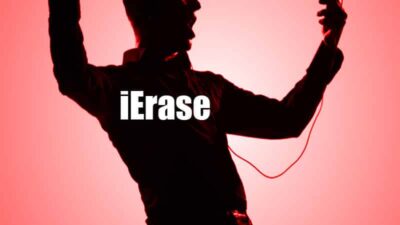Céad Míle Fáilte! Or for those of you who don’t speak Gaelic, a hundred thousand welcomes. Here’s a brief introduction to a few aspects of my culture, Irish culture.
Traditions, customs, and legends can be found just about anywhere in Ireland. Their evidence can be seen in buildings, artwork, dress, dance, music, literature, and food. They have a variety of origins, dating back to religious beliefs, myths, and everyday experiences.
Hills as green as emeralds, cover the countryside,
Lakes as blue as sapphires are Ireland’s special pride,
And rivers that shine like silver make Ireland look so fair,
But the friendliness of her people is the richest treasure there.
Unknown
Irish Culture And Religion: The Roman Catholic Church
One of the most profound influences on Irish culture is the Roman Catholic Church. Social esteem and respect mainly come from doing and saying the same as everyone else. There are certain practices, rules, regulations, traditions, and customs by which one becomes regarded as polite, civil, and moral. It is because of this that the Catholic Church holds so much influence over a predominantly Catholic Irish society. With so many Catholics, there are few others around to influence what is deemed as right or wrong.
Growing up, I was raised in a Roman Catholic household. My father had been raised a Presbyterian and didn’t attend church, but agreed with my mother that she would handle our spiritual upbringing. My grandparents had seven children, all of whom were raised in the Church, are still active in, and have raised their children in the Church. To my family, having something to believe in is very important. Being an active Catholic has is an important part of my connection to Irish culture and family experience. Our religious connection has given us the opportunity to have something to turn to in times of trouble, need, or happiness, which has been a blessing.
Irish Family Culture And Heritage
Another important aspect of Irish culture is family. According to an old Irish proverb though, it is unlucky to marry for love. In the past, Ireland, like many other countries, has been a land of marriages of convenience rather than romance, yet it was also a land of happy marriages.
One Irish myth, The Thirteenth Son of the King of Erin, depicts a father asking, “But how can I give one of them away when I am so fond of all?” when told by a blind seer he must choose which of his thirteen sons to give up. This just personifies the importance of family in an Irishman’s heart.
Not only is family traditionally important in Irish culture, but it is very important to me. Most of my peers don’t even know their second cousins, while I know many of my third or fourth cousins. Every year I attend at least one family reunion. I couldn’t imagine not being able to go to either of my grandparent’s‚ houses for Thanksgiving or Easter dinner or calling my cousins at school to see how they are doing or wish them a happy birthday.
A few members of my family have been researching our genealogy for years, and I can trace my lineage back to the times of William the Conqueror in the early 11th Century. Even this grasp of my distant ancestors and their past is important to me.
Popular Irish Symbols: Shamrock, Harp & Claddagh
Another thing that many people assimilate with Ireland is the many Irish symbols associated with the country. So many people know and recognize the shamrock, the traditional Irish Claddagh ring, and the harp. But who could actually identify why they became such well-known symbols of Ireland?
Take the shamrock for example. Just a simple wild plant. Perhaps it was because of this little ditty (see below), written after the British banned Irish regiments from displaying it on their uniforms. Their actions resulted in an outcry of nationalistic sentiment. Hence, the shamrock became a national emblem:
“Oh Paddy dear, and did ye hear the news that’s going round?
Unknown
The shamrock is forbid by law to grow on Irish ground!
No more St. Patrick’s Day we’ll keep; his color can’t be seen,
For there’s a cruel law agin’ the wearing o’ the Green!”
Another national symbol: the harp. It once graced the flag of the Republic, it still appears on official government documents as well as the Presidential flag, and it is displayed on Irish coins. So, how did the harp become an emblem synonymous with the Emerald Isle? Legend has it that a long-ago Irish king owned a harp, which was stolen from him by the gods of cold and darkness. The harp was then recovered and restored to the king by the gods or music and art, along with the ability to play music so poignant, or so sweet that its melody had the ability to make people weep with sorrow or smile with joy.
My family is very proud of our Irish heritage, and we show it whenever we can. My grandfather is a very skilled stained glass worker, and every year for Christmas he makes a new ornament for every family within our family. He has been known to make harps, shamrocks, little pipes, and Celtic knots. A few years ago he made a memorable gift for my mother: a framed stained glass Claddagh. A Claddagh is an Irish emblem in the shape of a heart with a set of hands holding it and a crown set on top. The heart portrays the love of the Irish people, the hands of their friendship, and the crown of their loyalty. The Claddagh has been proudly displayed in our front window ever since.
The Irish Dance And Its Ancient Celtic Origins
A lot of the elements of Irish culture retain ancient connections to its Celtic origins. One good example of this would be the Irish Dance. Though it has evolved throughout the years, and some of the most well-known dance troupes aren’t quite so traditional anymore, its Celtic roots are still very present.
One example of its evolution is the dance’s traditional posture. In most forms of dance, the dancers use their arms. However, in most Irish dances, the dancers hold their arms straight at their sides. This dates back to the English occupation of Ireland. The Crown had outlawed many things, including dancing. The Irish people got around this in a simple way: not using their arms. If they were dancing inside somewhere and an English sentry walked by and looked in the window, all he would see was a group of people jumping up and down. As the years went by, this form of armless dancing became part of Irish culture.
This area is especially dear to me because I have been an Irish Step Dancer since I was six years old. When I was in first grade, my mom came home one day and informed me that she had signed me up for dance lessons. I immediately became excited, thinking she had signed me up for ballet because like most other little girls, I wanted to be a famous ballet dancer. I was quite indignant that I couldn’t be a ballet dancer, but I agreed to try out the Irish dance lessons.
Ever since then, dancing has been a big part of my life and I never have regretted it. I used to compete but turned my focus away from that when I decided I wasn’t very competitive. Now my main focus is local hometown Irish Festivals which takes place in my hometown every year the weekend before St. Patrick’s Day. Even though it means dedicated practice and a grueling weekend of performance after performance, I still love getting up on stage in front of the audience.
Another big part of the Irish Festival for me is the time I get to spend with my family. My mom is on the committee for the festival, which helps to keep my entire family involved. Because of my dancing, I am unable to volunteer any time during the festival itself but my two brothers both volunteer their time to help set up and take everything down. Because of our obligations, life often gets hectic and harried, but we still find time to be together. They all find time to support me and come see me dance while I find the time in my schedule to spend time with them and the rest of my family who comes to support us and the festival.
The festival’s main purpose is to raise money for Project Children. This is an organization that provides money for underprivileged children from Northern Ireland and the Republic of Ireland to come to the US and spend the summer with an American family. I dedicate so much of my time to the festival not only because of the enjoyment I get out of performing on stage but knowing that I can help other people.
How The Culture Of Ireland Has Influenced My Life
If it hadn’t been for my family and my knowledge of my Irish heritage, I wouldn’t be who I am today. Because of my dancing, I have become a more confident person. I made many friends who understood me better as a person because of our like interests who I will remain friends for a long time. Because of my family, I have become more knowledgeable about the world around me. Because of my knowledge of the Irish cultures and others, I know not just the world that I live in, but the world of other people too. Learning about different cultures and the people that lived in them has helped me more understand things that are different from what I am used to and has made me a better person because of it.
I hope you enjoyed this introduction to Irish culture. There’s definitely a lot more to the culture of Ireland than dirty Irish jokes and getting drunk on St. Patrick’s Day. The culture of Ireland is filled with dance, religion, symbolism, and of course, family.
I’m a freelance writer with ten years of experience writing articles and article reviews. My blog URL address is http://peoplepower.ning.com


































 36 Best Running Man Quotes From The 1987 Arnold Schwarzenegger Film
36 Best Running Man Quotes From The 1987 Arnold Schwarzenegger Film
Leave a Reply